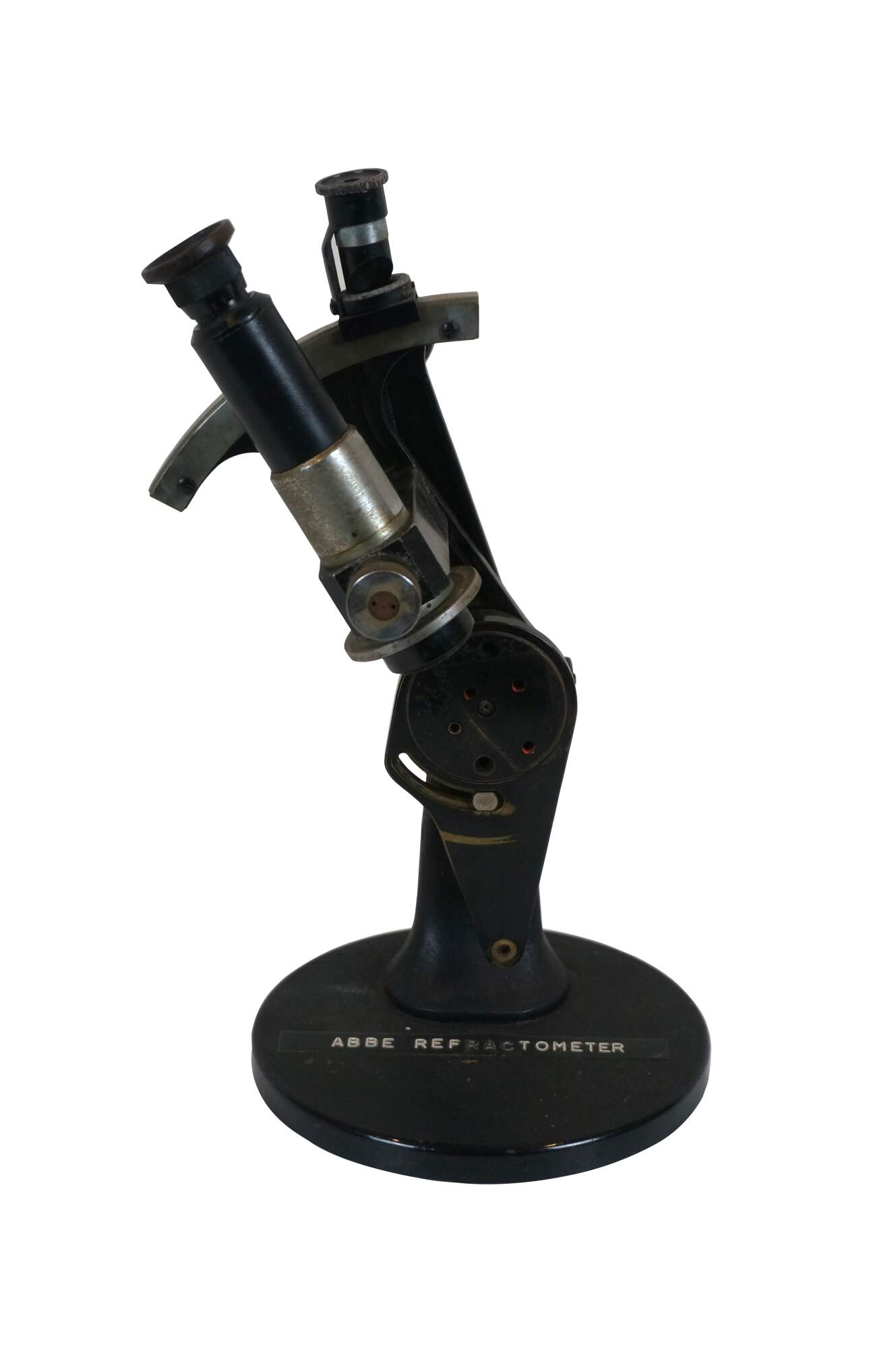
Shipping:
Free Shipping Included
Delivery:
Estimated 2-15 Business Days
Payments:
Credit Card, Check, Cash, PayPal, Apple Pay, Venmo
Returns:
30 Days 100% Money Back Guarantee, Buyer Pays Return Shipping
Description
Antique circa 1928 Abbe Refractometer produced by Carl Zeiss / Jena. No. 70539. Made in Germany.
"Ernst Abbe (1840–1905), working for Carl Zeiss AG in Jena, Germany in the late 19th century, was the first to develop a laboratory refractometer. These first instruments had built-in thermometers and required circulating water to control instrument and fluid temperatures. They also had adjustments for eliminating the effects of dispersion and analog scales from which the readings were taken. In the Abbe refractometer the liquid sample is sandwiched into a thin layer between an illuminating prism and a refracting prism. The refracting prism is made of a glass with a high refractive index (e.g., 1.75) and the refractometer is designed to be used with samples having a refractive index smaller than that of the refracting prism. A light source is projected through the illuminating prism, the bottom surface of which is ground (i.e., roughened like a ground-glass joint), so each point on this surface can be thought of as generating light rays traveling in all directions. A detector placed on the back side of the refracting prism would show a light and a dark region." (Source: Wikipedia)
"Carl Zeiss opened an optics workshop in Jena in 1846. By 1847 he was making microscopes full-time. In 1872 physicist Ernst Abbe joined Zeiss, and along with Otto Schott designed greatly improved lenses for the optical instruments they were producing. After Carl Zeiss's death in 1888, the business was incorporated as the Carl-Zeiss-Stiftung in 1889. By World War I, Zeiss was the world's largest camera-production company. In 1928 the Zeiss company acquired Hensoldt AG, which has produced Zeiss binoculars and rifle-scopes since 1964. As part of Nazi Germany's Zwangsarbeiter program, Zeiss used forced labour, including Jews and other minorities during World War II. At the end of the war, Jena was initially occupied by the United States Army. When Jena and Dresden were incorporated into the Soviet occupation zone, later East Germany, the US Army relocated some parts of Zeiss Jena to the Contessa manufacturing facility in Stuttgart, West Germany, while the remainder of Zeiss Jena was reestablished by the (eastern) German Democratic Republic as Kombinat VEB Zeiss Jena. In the West, business activity restarted in Oberkochen in present-day Baden-Württemberg (southwestern Germany) as Opton Optische Werke Oberkochen GmbH in 1946, which became Zeiss-Opton Optische Werke Oberkochen GmbH in 1947, but was soon renamed to "Carl Zeiss". West-German Zeiss products were labelled "Opton" for sale in the Eastern bloc, while East German Zeiss products were labelled "Zeiss Jena" or simply "Jena" for sale in Western countries. In 1973, the Western Carl Zeiss AG entered into a licensing agreement with the Japanese camera-company Yashica to produce a series of high-quality 35 mm film-cameras and lenses bearing the Contax and Zeiss brand names. This collaboration continued under Yashica's successor, Kyocera, until the latter ceased all camera production in 2005. Zeiss later produced lenses for the space industry and, more recently, has again produced high-quality 35 mm camera-lenses. In 1991, Jenoptik Carl Zeiss Jena was split in two, with Carl Zeiss AG (Oberkochen) taking over the company's divisions for microscopy and other precision optics (effectively reuniting the pre-war Carl Zeiss enterprise) and moving its microscopy and planetarium divisions back to Jena. Jenoptik GmbH was split off as a specialty company in the areas of photonics, optoelectronics, and mechatronics. As of 2023 there are arguably three companies with primarily "Zeiss Ikon" heritage: Zeiss Germany, the Finnish/Swedish Ikon (which bought the West German Zeiss Ikon AG), and the independent eastern Zeiss Ikon." (Source: Wikipedia)
Condition
Good Overall - Gentle wear commensurate with use/age; missing pieces
Dimensions
6" x 11" (Diameter x Height)